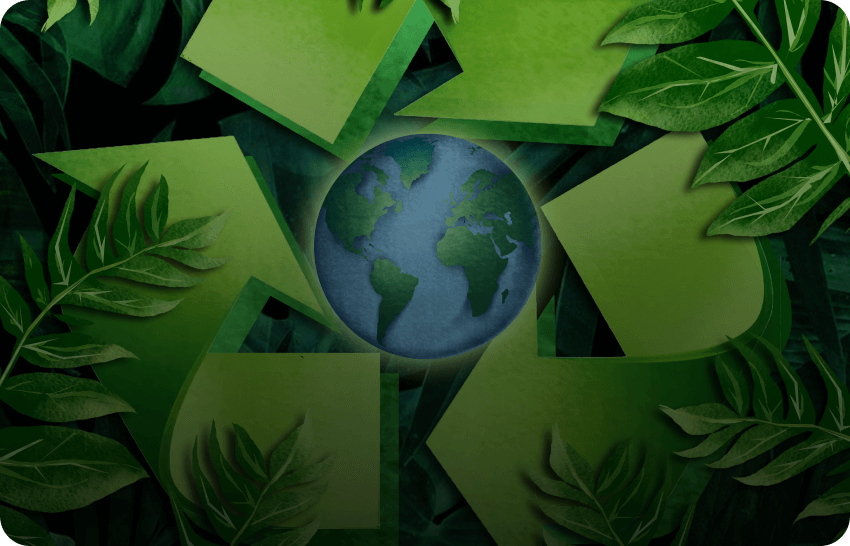My Green Doctor is an easy tool that lets us integrate climate awareness and education into our medical practice. We have had good success educating our staff and patients about health related complications of our warming world ..Mitigation options for patients and practices are nicely presented in the MGD workbook.
Bring environmental sustainability and added value to your healthcare clinic, office, or outpatient center in just five minutes per management meeting.
Add climate resilience to your practice.
You’ll help your patients and their families make wise choices as well.
Our mantra is “saving money, healthier communities."
Read what the American Medical Association says about My Green Doctor: https://bit.ly/40RmVD6
Email us to learn more: [email protected]

About MGD
We will guide your healthcare practice toward environmentally sustainable choices that will save the practice money and make the workplace healthier.
Here you learn ideas for your office, your families, your patients, and your community. The step-by-step approach of our Meeting-by-Meeting Guide makes this easy for you and your colleagues. You can qualify for the Green Practice Recognition Certificate, Level 1, Culture of Sustainability in as little as six months. Add value to your practice by using My Green Doctor!
Receive our free monthly newsletter with ideas for healthcare practices and families
What we do
My Green Doctor is the world’s leading practice management resource for health professionals and managers. We have the experience to provide everything you need to become environmentally sustainable.
After registering, you’ll get:
- Access to an easy-to-use program
- Step-by-step guidance, with no science background needed
- A free certificate to show your patients you’re going green
- Add value with our Green Purchasing Platform (coming soon)


Why go green
- Leads to wiser and more responsible uses of resources.
- Going green saves money by lowering office expenses.
- Creates a healthier work environment.
- Encourages office team-work and finding better ways to do things.
- Teaches patients sensible choices that they can make for their families.
- Improves job satisfaction.
- Enhances the office’s public image and the trust of patients.
- Decreases air pollution, water consumption, and waste.
- Builds a healthier community.
- Helps to make environmental sustainability part of everyone’s life!
Let’s get started! Watch our “Three Minute Video” to learn how easy it is to transform your practice with My Green Doctor.
Register now to use My Green Doctor in your clinic or practice:
Our Participating Organizations provide My Green Doctor as a valuable membership benefit. Email us for more information:



























Client Testimonials
Dr. David Fivenson
Fivenson Dermatology
Ann Arbor, Michigan
www.fivensondermatology.com
We’ve been saving money on electricity and supplies with this program over the past decade. There really isn’t a downside to using My Green Doctor as far as we’ve experienced. I’m grateful to the ACAAI for making this available to me as a member. My Green Doctor provides a great template for meetings and abundant resources for green projects. We have been able to create and move forward on many “green” projects thanks to My Green Doctor.
Dr. Ronald Saff
Allergy & Asthma Diagnostic Treatment Center
Tallahassee, Florida
www.ronsaff.com
My Green Doctor provides a great template for meetings and abundant resources for green projects. we have been able to create and move forward on many “green” projects thanks to My Green Doctor.
Dr. Marty Allison
Avera Medical Group
Pierre. South Dakota
Dr. Marty Allison
Avera Medical Group
Transforming Our Practice
Dr. Ronald Saff
Allergy & Asthma Diagnostic Treatment Center
Transforming Our Practice
Dr. David Fivenson
Fivenson Dermatology
the year My Green Doctor launched
0
members of the American Academy of Family Physicians, a MGD Participating Organization
0
countries whose national medical associations offer My Green Doctor through the World Medical Association (WMA)
0
By the
Numbers
clinicians and practice managers receiving My Green Doctor newsletters
0
new users in 2023
8500
physicians represented by The World Medical Association, A MGD Participating Organization
0
Million
our sponsors
We are grateful to Our Sponsors: organizations, foundations, and corporations that support the work and mission of the My Green Doctor Foundation: Our Sponsors.
To learn about sponsorship opportunities, please contact our Executive Director, Dr. Todd Sack: [email protected].







Todd L Sack, MD, FACP
Dr. Sack is Editor since 2010. He lectures and publishes widely about environmental sustainability for health professionals and managers. He chaired the Florida Medical Association’s Environment & Health Section for ten years and has served on many non-profit boards related to the environment and public health. He is a member of the Working Group on Health Professional Education and Communication of the National Academy of Medicine’s Action Collaborative on Decarbonizing the U.S. Healthcare Sector. In 2023 & 2024, he is President of Physicians for Social Responsibility, an organization recognized by two Nobel Peace Prizes. He has authored more than twenty policy positions related to environmental sustainability that have been adopted by the Florida Medical Association, the American Medical Association, and other health professional societies. He is an Associate Clinical Professor at the H. Wertheim College of Medicine. Todd practices gastroenterology at “We Care at Borland Groover”, a free clinic in Jacksonville, Florida, USA. His email address is [email protected].
How can we help you become more sustainable?




